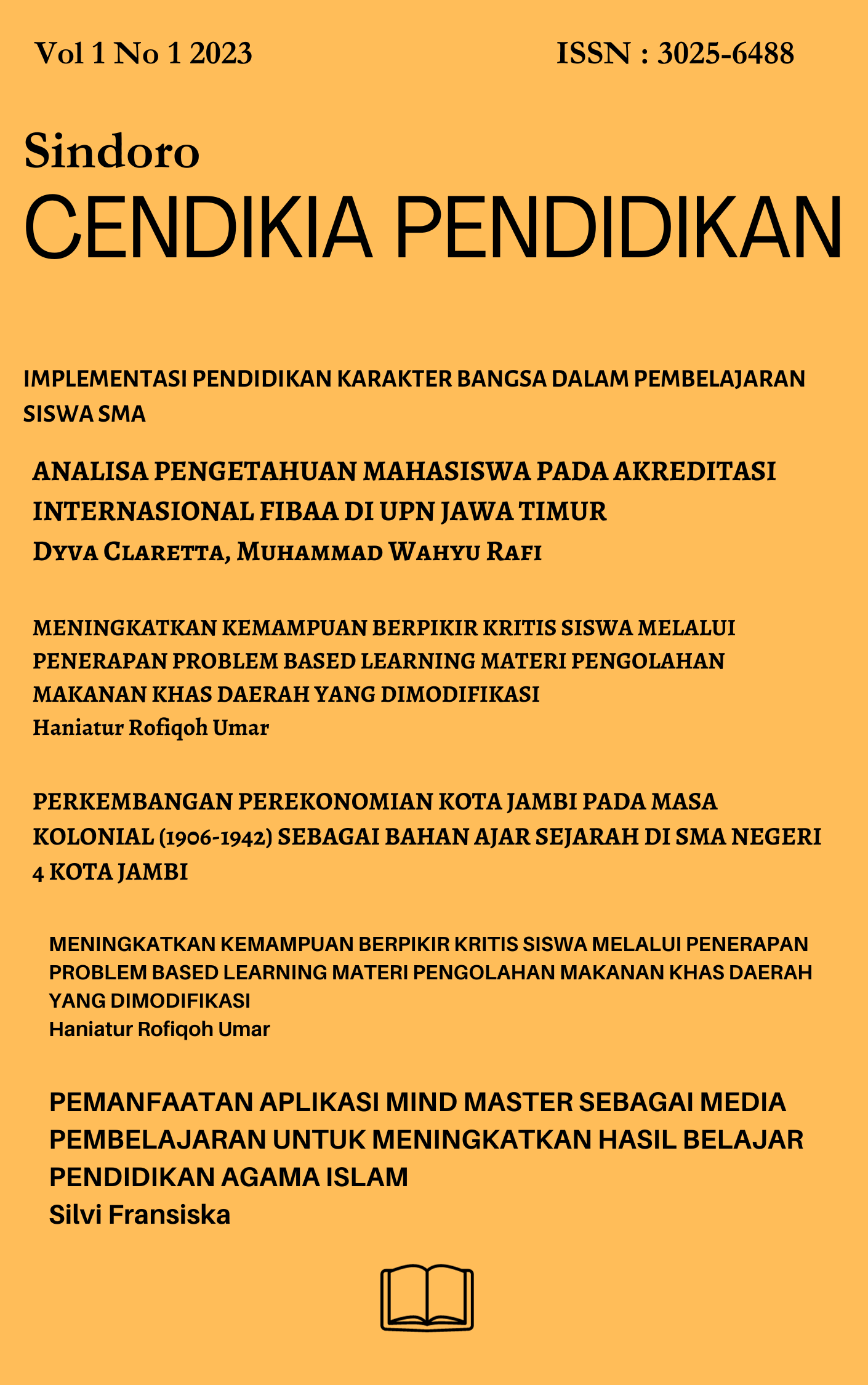ANALISIS BUKU TEKS ESPS BAHASA INDONESIA KELAS 5 SD/MI
Main Article Content
Abstract
This study aims to analyze the ESPS Bahasa Indonesia textbook for grade 5 SD/MI based on the aspects of content, presentation, language, and graphics. The research employs a literature study method, involving document analysis of the textbook published by the Center for Book Publishing, Standards, Curriculum, and Assessment of Education. The results of the analysis indicate that this book is highly suitable for use as a learning resource, with a feasibility score of 95.51%. The book meets various important criteria, including alignment with the curriculum, completeness of material, accuracy of facts, and a design that supports the learning process. The organized content design, use of simple language, and relevant illustrations effectively assist students in understanding concepts. Additionally, the variety of learning activities, such as discussions, creative projects, and practice exercises, enriches students' learning experiences. By fulfilling the applicable curriculum feasibility criteria, this book not only supports language skills acquisition but also fosters students' character development. This study recommends this book as one of the primary and effective learning resources for grade 5 SD/MI students.
Keywords: textbook, feasibility analysis, Bahasa Indonesia Learning, grade 5 SD/MI
Article Details

This work is licensed under a Creative Commons Attribution-NonCommercial 4.0 International License.
This work is licensed under a Creative Commons Attribution-ShareAlike 4.0 International License.
Authors who publish with this journal agree to the following terms:
- Authors retain copyright and grant the journal right of first publication with the work simultaneously licensed under a Creative Commons Attribution License that allows others to share the work with an acknowledgement of the work's authorship and initial publication in this journal.
- Authors are able to enter into separate, additional contractual arrangements for the non-exclusive distribution of the journal's published version of the work (e.g., post it to an institutional repository or publish it in a book), with an acknowledgement of its initial publication in this journal.
- Authors are permitted and encouraged to post their work online (e.g., in institutional repositories or on their website) prior to and during the submission process, as it can lead to productive exchanges, as well as earlier and greater citation of published work
References
Amalia, L. (2018). Kelayakan Buku Bahasa dan Sastra Indonesia Kelompok Peminatan Ilmu-Ilmu Bahasa dan Budaya Kelas XI Karya Penerbit Swasta. Jurnal Pendidikan Bahasa dan Sastra Indonesia, 2-3.
Agus Supriyanto, K. (Purwokerto). Analisis Buku Teks Bahasa Indonesia SMP Kelas Vlll Terbitan Kemendikbud Edisi Revisi Tahun 2017. Jurnal Pembelajaran Bahasa dan Sastra, 2-4.
Aziz Firdaus, S. S. (2014). Analisis Kelayakan Isi Buku Teks Bahasa Indonesia Terbitan Erlangga Kelas Vll SMP/MTS. Jurnal Bahasa, Sastra dan Pembelajaran, 3-6.
Djaali. (2021). In Metodelogi Penelitian Kuantitatif (pp. 4-7). Jawa Timur: Bumi Aksara.
Dr. Andi Prastowo, S. M. (2019). In Analisis Pembelajaran Tematik Terpadu (pp. 1-3). Jakarta: KENCANA.
ESPS Bahasa Indonesia Untuk SD/MI Kelas V. (n.d.). In R. P. A. Indradi, 2022.
Sukmadinata, N. S. (2015). Metode Penelitian Pendidikan. PT Remaja Rosdakarya.
(2020). In S. Rosmilan Pulungan, Telaah Kurikulum dan Buku Teks Bahasa Indonesia. Depok: GUEPEDIA.
(2022). In R. P. A. Indradi, ESPS Bahasa Indonesia Untuk SD/MI Kelas V (MERDEKA).

